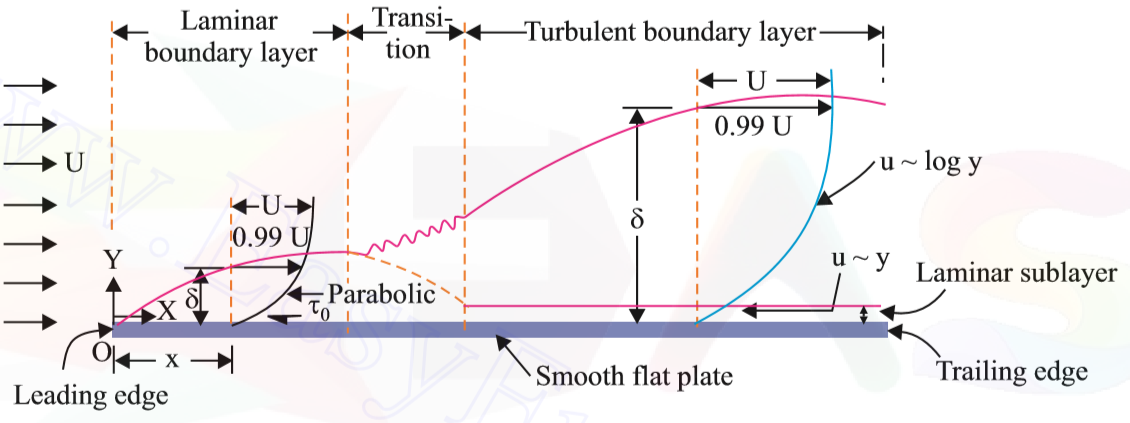Chapter:
Explain Boundary Layer Concept along a thin plate?
When a real fluid (viscous fluid) flows past a stationary solid boundary, a layer of fluid which comes in contact with the boundary surface, adheres to it (on account of viscosity) and condition of no slip occurs (The no-slip condition implies that the velocity of fluid at a solid boundary must be the same as that of boundary itself). Thus the layer of fluid which cannot slip away from the boundary surface undergoes retardation; this retarded layer further causes retardation for the adjacent layers of the fluid, thereby developing a small region in the immediate vicinity of the boundary surface in which the velocity of the flowing fluid increases rapidly from zero at the boundary surface and approaches the velocity of main stream. The velocity gradient will be set up and this gradient develops shear resistant which retards the fluid. So, the boundary layer develops at the leading edge.
Show More
All Chapters
Dimensional Analysis, Similitude and Physical Modelling
Flow Past Through Submerged Body
Boundary Layer Theory
Properties of fluid
- properties of fluids
- complete IOE solution on fluid mechanics
- Detailed description chapterwise
- Unlimited Numericals problem solved with updation daily
- And much more
Hydrostatics
- Hydrostatics basic theory
- All important Numericals
- IOE,PU, MIT,A.M.I.E,Delhi university,EUPS,Engineering service exam solved problems
- Detailed explanation
Hydrostatics- Buoyancy and metacentric height
- detailed explanation of force of buoyancy, metacentric height,stability of floating body
- unlimited numericals solved with updation weekly
- including IOE , PU, KU, GATE, MIT, ANNA UNIVERSITY,UPSC EXAM SOLUTIONS
- And much more
 Guest
Guest
